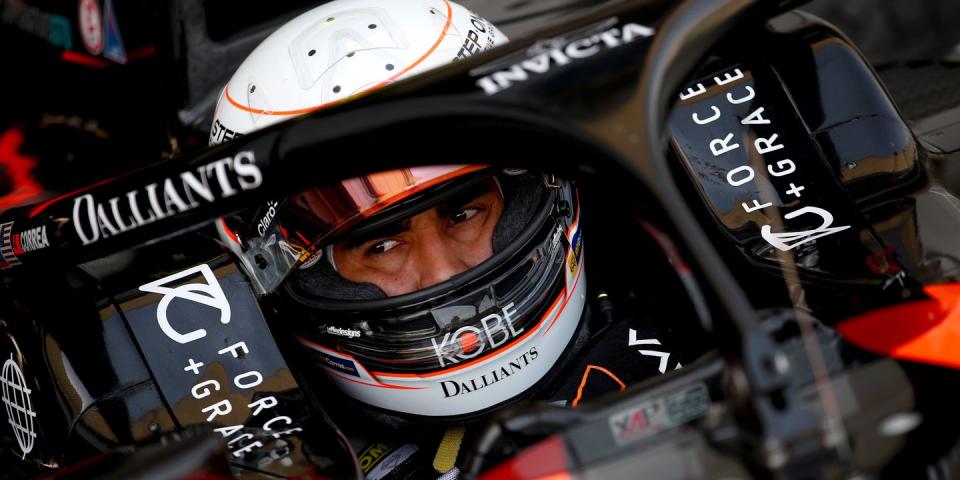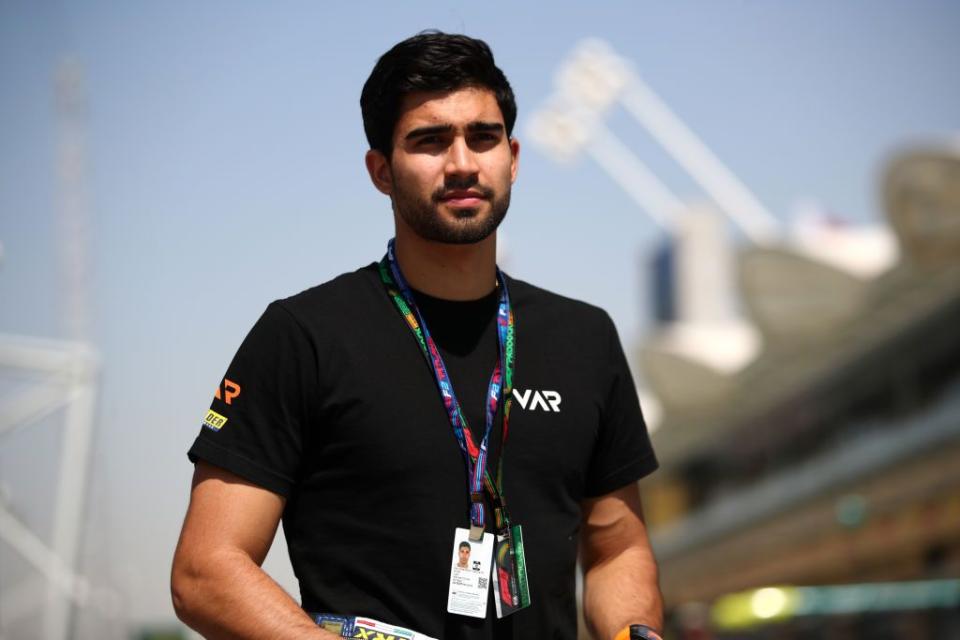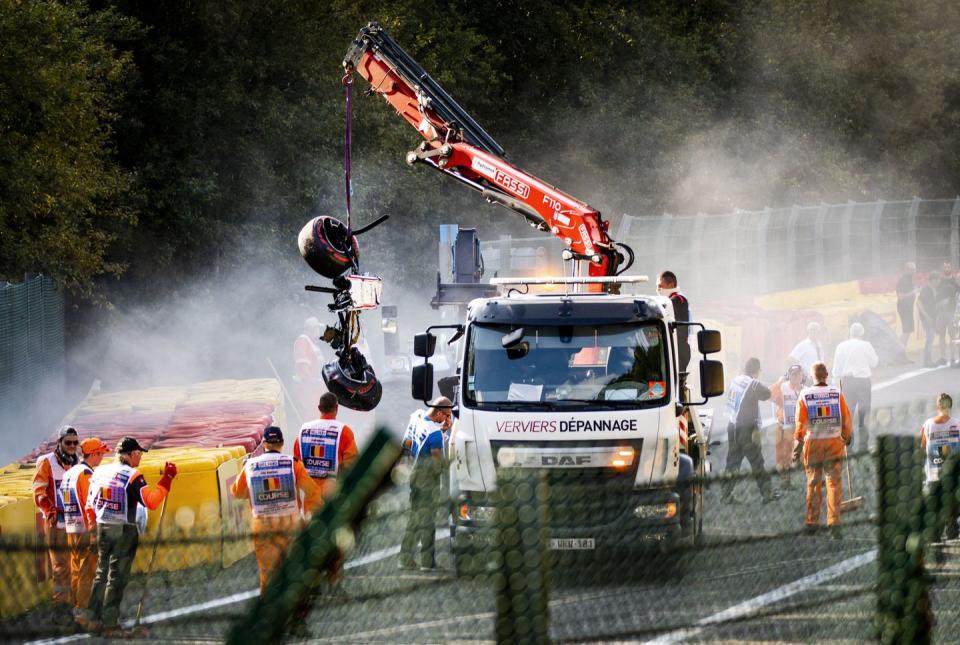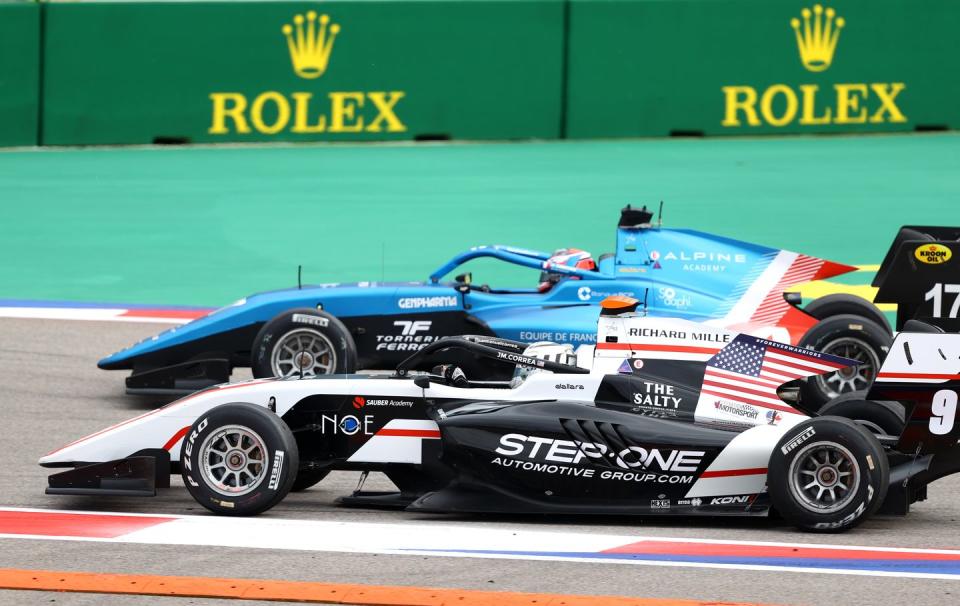Facing Possible Amputation, American F2 Racer Juan Manuel Correa Is Defying the Odds

Juan Manuel Correa suffered life-changing injuries in a serious Formula 2 crash in 2019. Now, three and a half years later, he’s back in the championship full time and aiming high.
Autoweek caught up with Correa for insight into his recovery, next steps, and long-term prognosis.
It is a busy 2023 season for Correa, who was born in Ecuador and competes under an American license after moving to Miami as a young child. Alongside stepping up to for Formula 2 for its longest-ever season—with 28 races at 14 rounds, in support of Formula 1—he will participate in nonclashing events of the World Endurance Championship’s LMP2 category.
“From January to now, I’ve basically been nonstop, and the busiest part of the season isn’t here yet. But I love it. It’s pretty cool,” says Correa.
Correa adds that it’s “incredible to be back in F2 and to be competitive.”

As a rookie in 2019, he scored two podiums and was a top-10 contender in the standings before the accident. The opening six races of 2023 have yielded three top-10 finishes alongside some errors and misfortune, and Correa believes podiums are again possible.
“I feel like I’m properly a racing driver again, and this year I can really start to show what I’m capable of,” he says. “I’m feeling quite good, both with the car and the team, and really I feel like the potential we have is quite high.”
It is remarkable that Correa is even competing, let alone doing so in Formula 1’s feeder championship.
It was August 31, 2019, when Correa suffered life-altering injuries in a horrific Formula 2 accident at Spa-Francorchamps in Belgium.
In a complex and protracted multicar accident, Correa’s car struck Anthoine Hubert’s nearly side-on at 135 mph with a peak impact of 65 g, inverting his car. Hubert tragically died as a result, while Correa was airlifted to a hospital with severe injuries to his legs. After being transferred to London a few days later, Correa suffered acute respiratory distress syndrome and was in a coma for almost three weeks before his lungs recovered sufficiently to allow a 17-hour surgery on his legs.

“The beginning was just so uncertain, like I was hit with this curse,” Correa said. “You’re in a lot of pain, immobilized in hospital. The best way to describe it is a nightmare you (think you’re) going to wake up from, but you don’t.”
Aside from the physical injuries, doctors also kept a close eye on Correa as “they were expecting me to have PTSD and a lot of trauma,” and he “had depression—it’s not like it was smooth sailing—but I just kind of pushed through it and spoke about it very openly.
“My mentality was straightforward like I am now. I would make jokes, I was like ‘I’m here with 10 kilograms of metal,’ like ‘What the (heck), haha, this is (messed) up.’ They realized I was ... not fine, but I was going to be OK.”
Correa documented his recovery on social media, attended the Belgian Grand Prix a year on from his accident, and set about returning to competition.
“I accepted it, processed it. Then what helped me cope was (the thought of) ‘What am I going to do about it? I’m going to push as hard as possible to make my situation better, instead of feeling sorry for myself,’” he says. “I never let myself fall into pity. I hated pity. That was not nice. I’m going to push as hard as I can to make something out of my life one way or another, and that’s when I decided I’m going to race again. What’s the craziest thing I can do? Race again, okay, that’s what I’m going to do.”
Correa “kind of convinced myself it was possible” to return to racing, and doctors were initially so skeptical that they laughed off his chances. Even Correa had “internal doubts of like, ‘Is this even possible? Is it going to happen?’ But I kept pushing as much as I could.” A test in a GP3 Series car, which he had raced in 2018, was arranged for early 2021. It made Correa realize: “It’s possible to drive a car, but was it going to be possible to be competitive again?”
Correa decided to return at the lower level—Formula 3—and chipped away, but “never felt so comfortable with the F3 car. I don’t know why.” He finished 21st in the overall points standings his return season in 2021 before improving to 13th, which included a podium finish, last year. Correa then had a one-off Formula 2 race in 2022’s Abu Dhabi finale before committing to a full season.

“Immediately when I drove the F2 again, I was like, ‘Yep, this is a lot more my pace. I just feel better.’ It was two tough years in F3, but it was needed.”
Correa has returned to Formula 2 “much better than I was in 2019—more complete, stronger, way more ready” and feels like a rookie again after how much he has been through in the intervening seasons. The F2/18 remains largely unchanged—barring the 18-inch tires that were introduced in 2020—and Correa acknowledges that “the category has also improved; the level is really high this year.
“I’m not saying that because I’m here—it’s probably the highest level ever. In 2019, as a rookie, the results I managed to get, I deserved them, and I did a good job in many races. But this year, to do the same results, I’ve got to work a lot harder.”
Had surgery to remove some metals earlier this week, so this has been life lately pic.twitter.com/8ytntLQvKu
— Juan Manuel Correa (@JMCorrea__) December 3, 2022
That enforced break from Formula 2 has also allowed Correa to “see the big picture more clearly,” though he recognizes that some of that is age related. “It sounds clichéd, but when you go through something like that, it changes you, and for the better. In life, my approach to life and appreciation of things, there is a difference. I still try to be primitive in the sense of driving a car on the limit. You have to be very instinctual. When I get in the car, I push like hell, which is what I’ve done for all my life, but there is definitely a J.M. pre- and post-accident.”
Correa has to deal with the aftermath of the accident daily.

 Yahoo Autos
Yahoo Autos 